
Rabbit Anti-phospho-FMRP (Ser500)antibody
FMRP (phospho S500); FMRP (phospho Ser500); p-FMRP (phospho S500); p-FMR1 (phospho S500); FMR1; FMR1_HUMAN; FMRP; FMRP phospho S499; Fragile X mental retardation 1; Fragile X mental retardation 1 protein; Fragile X mental retardation protein 1; FRAXA; MGC
View History [Clear]
Details
Product Name phospho-FMRP (Ser500) Chinese Name 磷酸化脆性X综合征相关蛋白AFF1抗体 Alias FMRP (phospho S500); FMRP (phospho Ser500); p-FMRP (phospho S500); p-FMR1 (phospho S500); FMR1; FMR1_HUMAN; FMRP; FMRP phospho S499; Fragile X mental retardation 1; Fragile X mental retardation 1 protein; Fragile X mental retardation protein 1; FRAXA; MGC87458; POF; POF1; Protein FMR-1; Protein FMR1. literatures Product Type Phosphorylated anti Research Area Cell biology Neurobiology Signal transduction Cell type markers Epigenetics Immunogen Species Rabbit Clonality Polyclonal React Species Human, Mouse, Rat, (predicted: Chicken, Dog, Pig, Cow, Rabbit, Zebrafish, Sheep, Guinea Pig, ) Applications WB=1:500-2000 ELISA=1:5000-10000 IHC-P=1:100-500 IHC-F=1:100-500 ICC=1:100-500 IF=1:100-500 (Paraffin sections need antigen repair)
not yet tested in other applications.
optimal dilutions/concentrations should be determined by the end user.Theoretical molecular weight 75kDa Cellular localization The nucleus cytoplasmic Form Liquid Concentration 1mg/ml immunogen KLH conjugated synthesised phosphopeptide derived from human FMRP around the phosphorylation site of Ser500: NA(p-S)ET Lsotype IgG Purification affinity purified by Protein A Buffer Solution 0.01M TBS(pH7.4) with 1% BSA, 0.03% Proclin300 and 50% Glycerol. Storage Shipped at 4℃. Store at -20 °C for one year. Avoid repeated freeze/thaw cycles. Attention This product as supplied is intended for research use only, not for use in human, therapeutic or diagnostic applications. PubMed PubMed Product Detail Fragile X syndrome is the most frequent form of inherited mental retardation and is the result of transcriptional silencing of the FMR1 gene on the X chromosome. The FMR1 gene contains a distinct CpG dinucleotide repeat located in the 5' untranslated region of the gene. In fragile X syndrome this tandem repeat is substantially amplified and subjected to extensive methylation and enhanced transcriptional silencing. The FMR1 protein (or FMRP) is an RNA-binding protein that associates with polyribosomes and is a likely component of a messenger ribonuclear protein (mRNP) particle. It contains several features that are characteristics of RNA-binding proteins, including two hnRNPK homology (KH) domains and an RGG amino acid motif (RGG box). FMR1 localizes to both the nucleus and the cytoplasm and can also interact with two fragile X syndrome related factors, FXR1 and FXR2, which form heterodimers through their N-terminal coiled-coil domains. Since FMR1 contains both a nuclear localization signal and a nuclear export signal it is also implicated in the nucleocytoplasmic transport of mRNAs.
Function:
Translation repressor. Component of the CYFIP1-EIF4E-FMR1 complex which binds to the mRNA cap and mediates translational repression. In the CYFIP1-EIF4E-FMR1 complex this subunit mediates translation repression (By similarity). RNA-binding protein that plays a role in intracellular RNA transport and in the regulation of translation of target mRNAs. Associated with polysomes. May play a role in the transport of mRNA from the nucleus to the cytoplasm. Binds strongly to poly(G), binds moderately to poly(U) but shows very little binding to poly(A) or poly(C).
Subunit:
Component of the CYFIP1-EIF4E-FMR1 complex which is composed of CYFIP, EIF4E and FMR1. Interacts with CYFIP1 and CYFIP2. The interaction with brain cytoplasmic RNA 1 (BC1) increases binding affinity for the CYFIP1-EIF4E complex in the brain (By similarity). Homooligomer. Found in a RNP granule complex with IGF2BP1. Directly interacts with SMN and TDRD3. Interacts with the SMN core complex that contains SMN1, GEMIN2/SIP1, DDX20/GEMIN3, GEMIN4, GEMIN5, GEMIN6, GEMIN7, GEMIN8 and STRAP/UNRIP. Interacts with FXR1, FXR2, IGF2BP1, NUFIP1, NUFIP2, MCRS1 and RANBP9.
Subcellular Location:
Cytoplasm. Nucleus, nucleolus.
Tissue Specificity:
Highest levels found in neurons, brain, testis, placenta and lymphocytes. Also expressed in epithelial tissues and at very low levels in glial cells.
Post-translational modifications:
Phosphorylated on several serine residues.
DISEASE:
Defects in FMR1 are the cause of fragile X syndrome (FRAX) [MIM:300624]. Fragile X syndrome is a common genetic disease (has a prevalence of one in every 2000 children) which is characterized by moderate to severe mental retardation, macroorchidism (enlargement of the testicles), large ears, prominent jaw, and high-pitched, jocular speech. The defect in most fragile X syndrome patients results from an amplification of a CGG repeat region which is directly in front of the coding region.
Defects in FMR1 are the cause of fragile X tremor/ataxia syndrome (FXTAS) [MIM:300623]. In FXTAS, the expanded repeats range in size from 55 to 200 repeats and are referred to as 'premutations'. Full repeat expansions with greater than 200 repeats results in fragile X mental retardation syndrome [MIM:300624]. Carriers of the premutation typically do not show the full fragile X syndrome phenotype, but comprise a subgroup that may have some physical features of fragile X syndrome or mild cognitive and emotional problems.
Defects in FMR1 are the cause of premature ovarian failure syndrome type 1 (POF1) [MIM:311360]. An ovarian disorder defined as the cessation of ovarian function under the age of 40 years. It is characterized by oligomenorrhea or amenorrhea, in the presence of elevated levels of serum gonadotropins and low estradiol.
Similarity:
Belongs to the FMR1 family.
Contains 2 Agenet-like domains.
Contains 2 KH domains.
SWISS:
Q06787
Gene ID:
2332
Database links:
UniProtKB/Swiss-Prot: Q06787.1
Product Picture
Primary: Anti-P-FMRP (SL13188R) at 1:300;
Secondary: HRP conjugated Goat-Anti-Rabbit IgG(bse-0295G-HRP) at 1: 5000;
ECL excitated the fluorescence;
Predicted band size : 75 kD
Observed band size : 75 kDTissue/cell: rat brain tissue; 4% Paraformaldehyde-fixed and paraffin-embedded;
Antigen retrieval: citrate buffer ( 0.01M, pH 6.0 ), Boiling bathing for 15min; Block endogenous peroxidase by 3% Hydrogen peroxide for 30min; Blocking buffer (normal goat serum,C-0005) at 37℃ for 20 min;
Incubation: Anti-phospho-FMRP (Ser500) Polyclonal Antibody, Unconjugated(SL13188R) 1:200, overnight at 4°C, followed by conjugation to the secondary antibody(SP-0023) and DAB(C-0010) staining
Tissue/cell: rat brain tissue; 4% Paraformaldehyde-fixed and paraffin-embedded;
Antigen retrieval: citrate buffer ( 0.01M, pH 6.0 ), Boiling bathing for 15min; Block endogenous peroxidase by 3% Hydrogen peroxide for 30min; Blocking buffer (normal goat serum,C-0005) at 37℃ for 20 min;
Incubation: Anti-phospho-FMRP(Ser500) Polyclonal Antibody, Unconjugated(SL13188R) 1:200, overnight at 4°C, followed by conjugation to the secondary antibody(SP-0023) and DAB(C-0010) staining
Paraformaldehyde-fixed, paraffin embedded (mouse brain); Antigen retrieval by boiling in sodium citrate buffer (pH6.0) for 15min; Block endogenous peroxidase by 3% hydrogen peroxide for 20 minutes; Blocking buffer (normal goat serum) at 37°C for 30min; Antibody incubation with (phospho-FMRP (Ser500)) Polyclonal Antibody, Unconjugated (SL13188R) at 1:200 overnight at 4°C, followed by operating according to SP Kit(Rabbit) (sp-0023) instructionsand DAB staining.Paraformaldehyde-fixed, paraffin embedded (rat brain); Antigen retrieval by boiling in sodium citrate buffer (pH6.0) for 15min; Block endogenous peroxidase by 3% hydrogen peroxide for 20 minutes; Blocking buffer (normal goat serum) at 37°C for 30min; Antibody incubation with (phospho-FMRP (Ser500)) Polyclonal Antibody, Unconjugated (SL13188R) at 1:200 overnight at 4°C, followed by operating according to SP Kit(Rabbit) (sp-0023) instructionsand DAB staining.Paraformaldehyde-fixed, paraffin embedded (rat testis); Antigen retrieval by boiling in sodium citrate buffer (pH6.0) for 15min; Block endogenous peroxidase by 3% hydrogen peroxide for 20 minutes; Blocking buffer (normal goat serum) at 37°C for 30min; Antibody incubation with (phospho-FMRP (Ser500)) Polyclonal Antibody, Unconjugated (SL13188R) at 1:200 overnight at 4°C, followed by operating according to SP Kit(Rabbit) (sp-0023) instructionsand DAB staining.Paraformaldehyde-fixed, paraffin embedded (rat brain); Antigen retrieval by boiling in sodium citrate buffer (pH6.0) for 15min; Block endogenous peroxidase by 3% hydrogen peroxide for 20 minutes; Blocking buffer (normal goat serum) at 37°C for 30min; Antibody incubation with (phospho-FMRP (Ser500)) Polyclonal Antibody, Unconjugated (SL13188R) at 1:200 overnight at 4°C, followed by operating according to SP Kit(Rabbit) (sp-0023) instructionsand DAB staining.
Bought notes(bought amounts latest0)
No one bought this product
User Comment(Total0User Comment Num)
- No comment
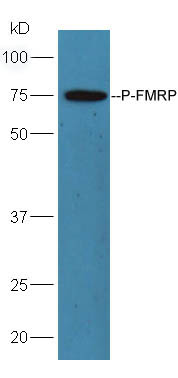
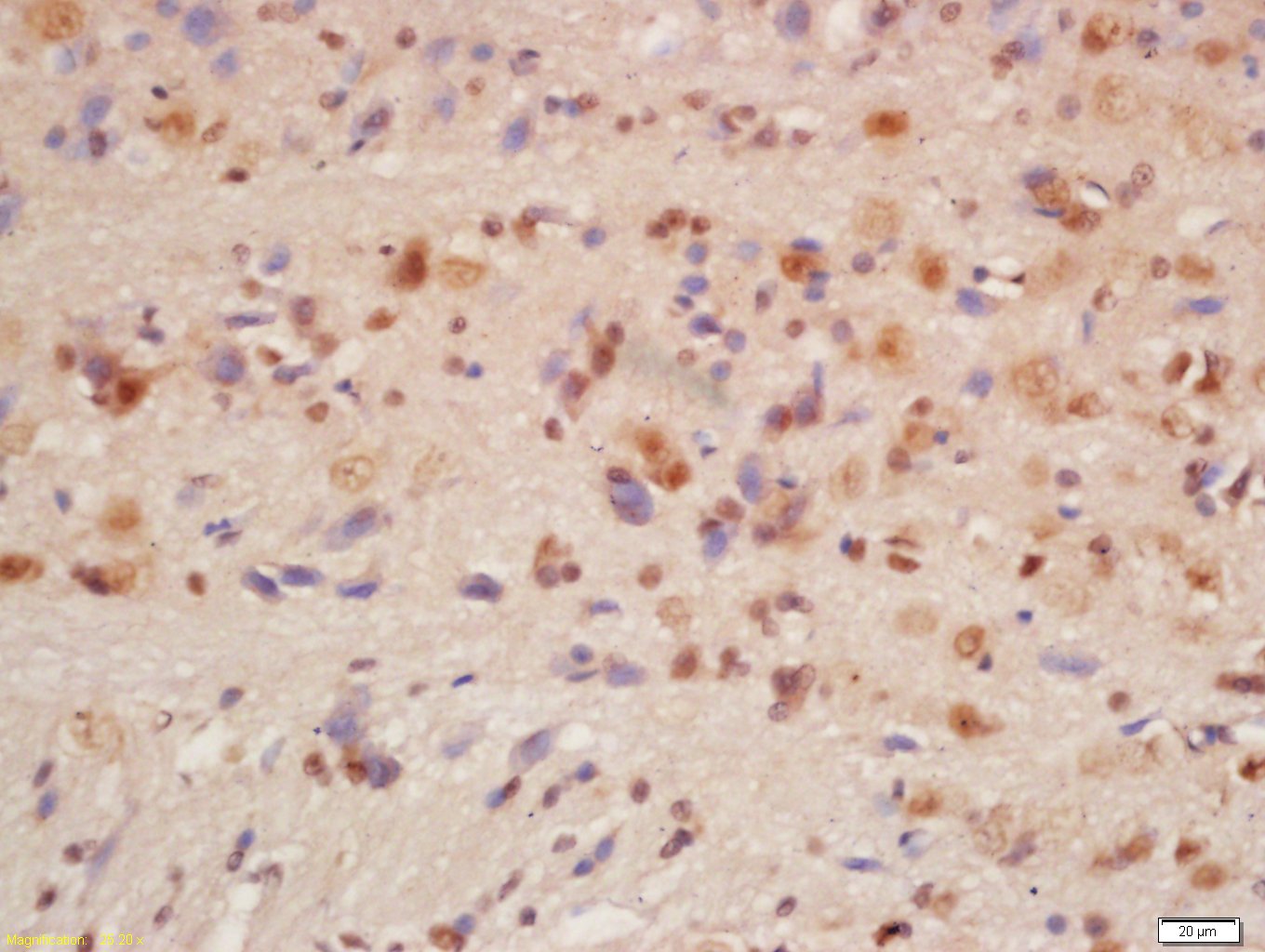
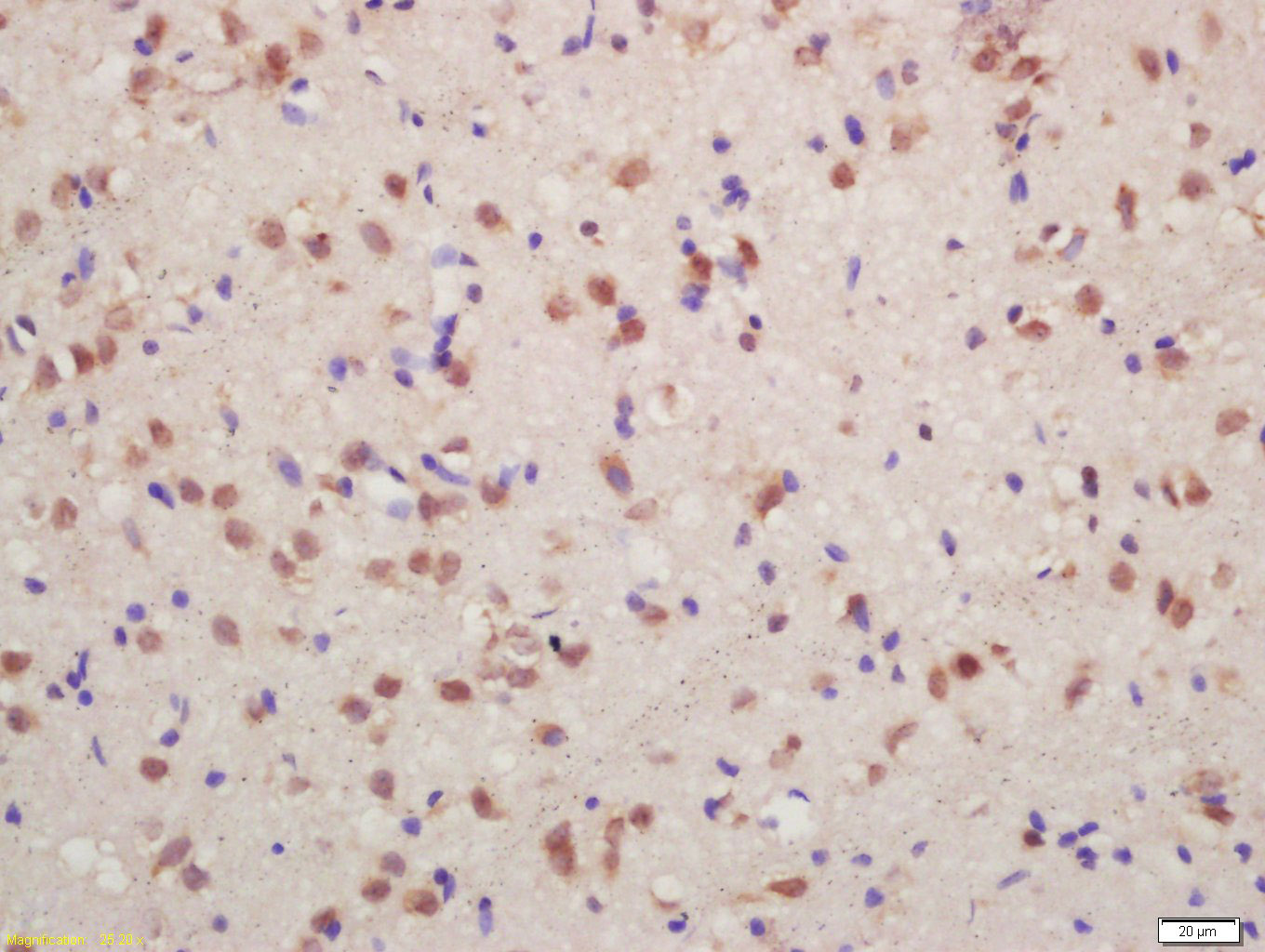
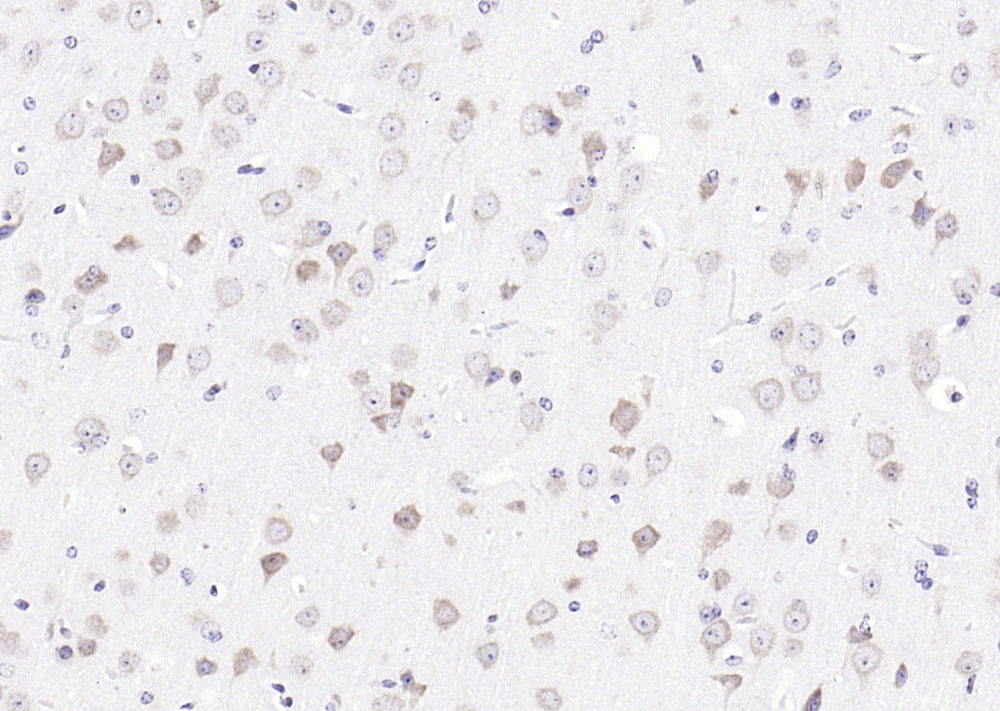
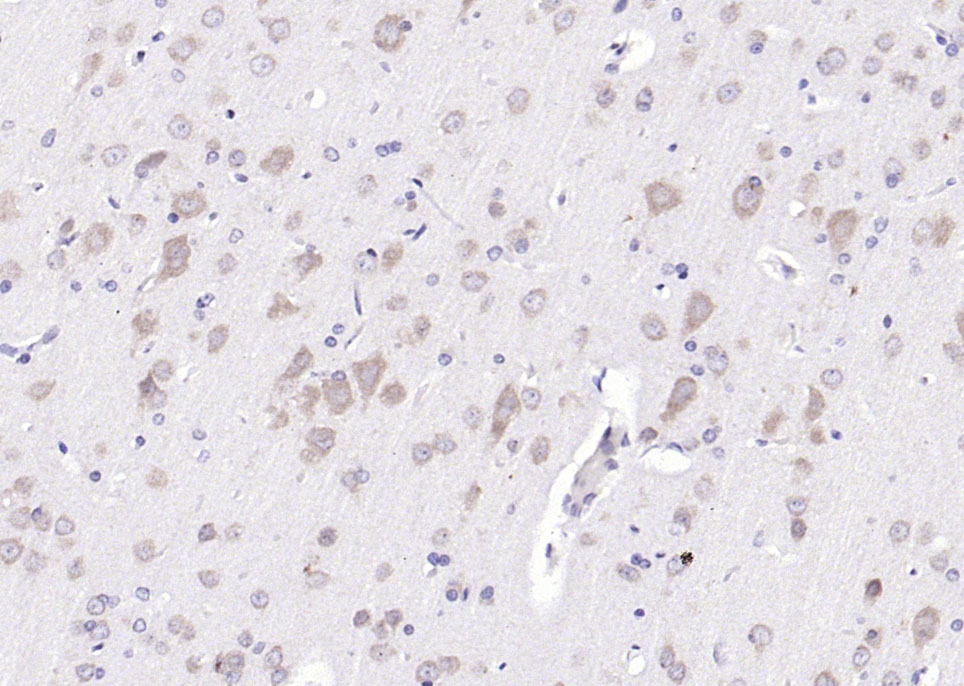
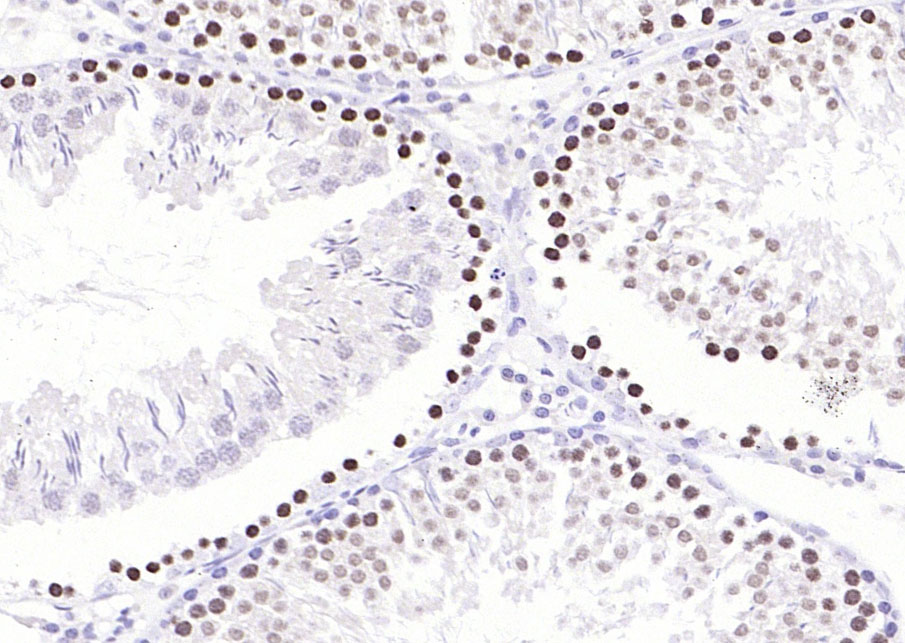
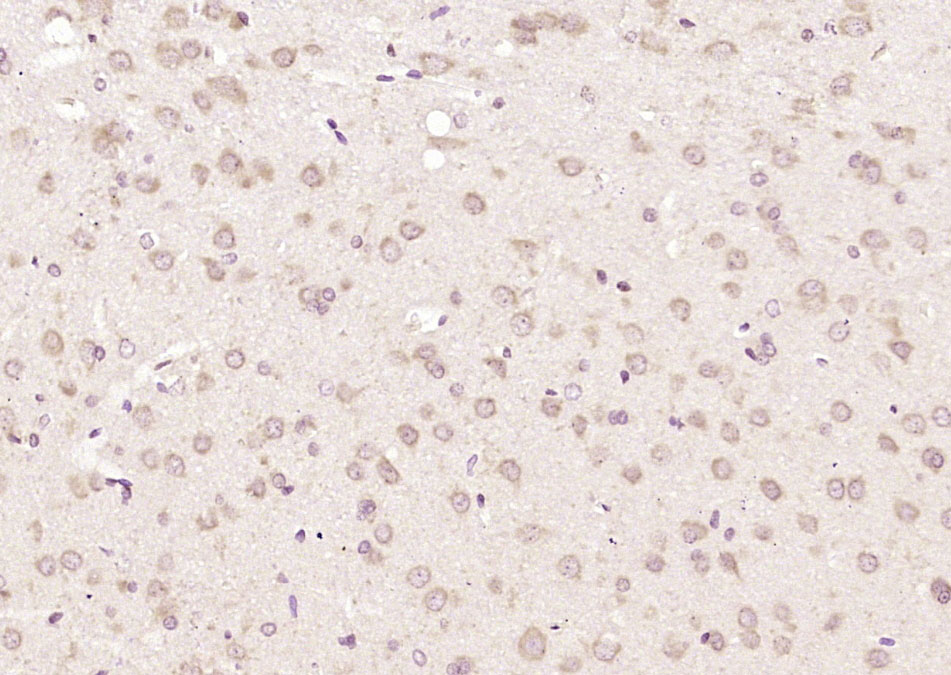


 +86 571 56623320
+86 571 56623320
 +86 18668110335
+86 18668110335

